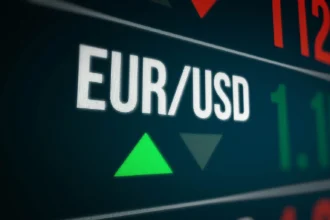Wall Street Rebounds as S&P 500 Recovers from Correction, Gold Hits Record Before Retreat
U.S. equities staged a robust rebound on Friday, following gains in European markets, as investors shook off recent volatility and technical indicators suggested a potential bottoming out after the S&P 500 officially entered correction territory this week. However, underlying caution remained as safe-haven gold briefly surged to a historic record.
S&P 500 Leads Wall Street Recovery Amid Trade War Jitters
After a turbulent week, the S&P 500 rallied 2.13% to close at 5,638.94, marking its strongest one-day gain since November 6, the day after the U.S. election. The Dow Jones Industrial Average climbed 1.65% to 41,488.19, while the tech-heavy Nasdaq Composite surged 2.61% to 17,754.09, also notching its best daily performance since early November.
Friday’s rally came after the S&P 500 dropped more than 10% from its February highs, officially entering correction territory, largely triggered by President Donald Trump’s announcement of a 200% tariff on European wine and spirits in retaliation for European tariffs on U.S. steel and aluminum.
Garrett Melson, portfolio strategist at Natixis Investment Managers, attributed Friday’s bounce to technical factors, stating, “There’s nothing fundamentally new driving this rally outside of the S&P confirming its correction. It’s more of a technical relief.”
Global Stocks Follow Suit, Euro Strengthens on German Fiscal Optimism
Globally, risk appetite improved with MSCI’s broadest gauge of global equities rising 1.79% to 836.32. However, despite the rebound, the index posted its sharpest weekly drop since December.
The pan-European STOXX 600 index closed up 1.14%, buoyed by news from Germany. German Chancellor-in-waiting Friedrich Merz confirmed that his coalition secured backing from the Greens for a significant fiscal package, including a €500 billion infrastructure fund, sparking optimism across European markets.
The euro reacted positively, gaining 0.28% to $1.0882 versus the U.S. dollar, and rose 0.44% against the British pound. It also appreciated 0.63% versus the Swiss franc.
Gold Hits $3,000 Before Pullback as Investors Hedge Tariff Uncertainty
Gold prices briefly touched a record high of $3,000 per ounce during early London trading as heightened trade war anxieties boosted safe-haven demand. However, the metal retraced slightly, ending down 0.17% at $2,982.72 an ounce. Still, gold is up nearly 14% year-to-date, supported by growing fears of prolonged trade tensions and global economic uncertainty.
Bond Yields Rise as Risk Appetite Improves
With equities rebounding, bond markets faced selling pressure. The yield on benchmark German 10-year Bunds rose to 2.876%, after hitting an intraday high of 2.936%.
U.S. Treasury yields also climbed as safe-haven demand faded. The 10-year Treasury yield advanced 4.2 basis points to 4.318%, while the 30-year yield edged up to 4.625%. The 2-year yield, sensitive to Federal Reserve policy expectations, rose 7 basis points to 4.023%.
“Markets are adjusting to the reality that tariffs are becoming a structural issue, not just a negotiating ploy,” noted Zachary Griffiths, senior strategist at CreditSights.
Currency Markets: Dollar Mixed, Yen and Swiss Franc Weaken
The U.S. dollar saw mixed moves across major currencies. The greenback rose 0.55% to 148.62 yen and gained 0.33% against the Swiss franc to trade at 0.885, buoyed by optimism that the U.S. government will avoid a shutdown this weekend.
Oil Prices Rebound as Supply Risks Linger
Oil prices rose roughly 1% on Friday, paring earlier weekly losses as traders weighed geopolitical risks tied to Russia’s ongoing war in Ukraine. Brent crude futures settled at $70.58 a barrel, while U.S. West Texas Intermediate closed at $67.18 per barrel.
Outlook: Market Relief or Dead-Cat Bounce?
While Friday’s rally offered a reprieve to jittery investors, questions remain over the sustainability of the rebound as tariff tensions and global growth risks persist.
Macquarie analysts noted, “Despite today’s positive tone, the broader environment remains fragile, with trade wars, fiscal shifts, and inflation concerns continuing to weigh on sentiment.”



